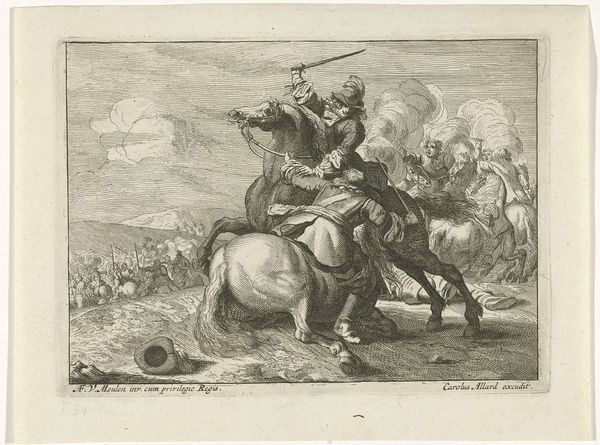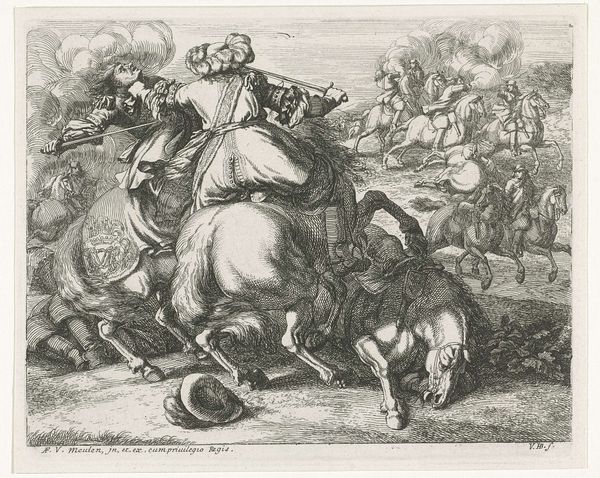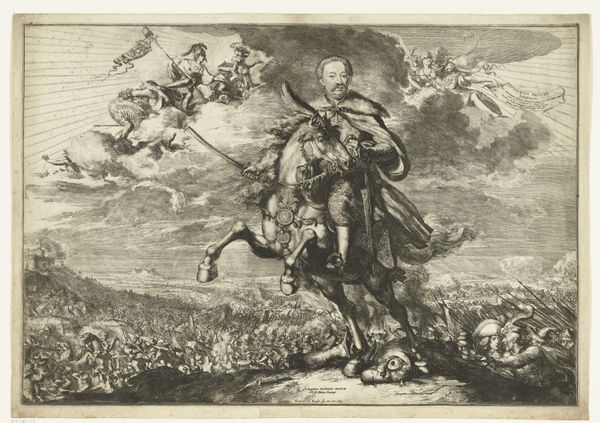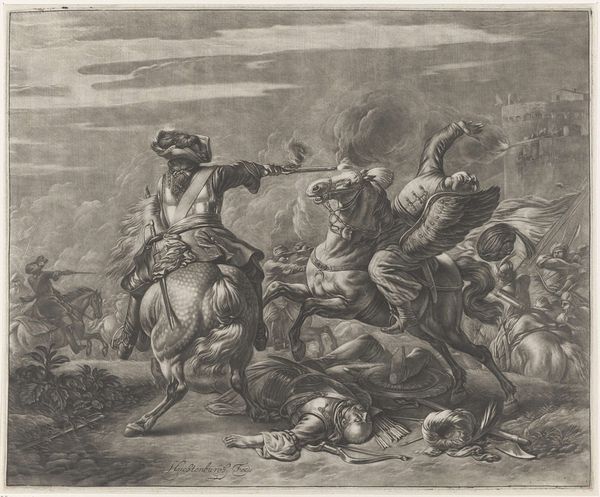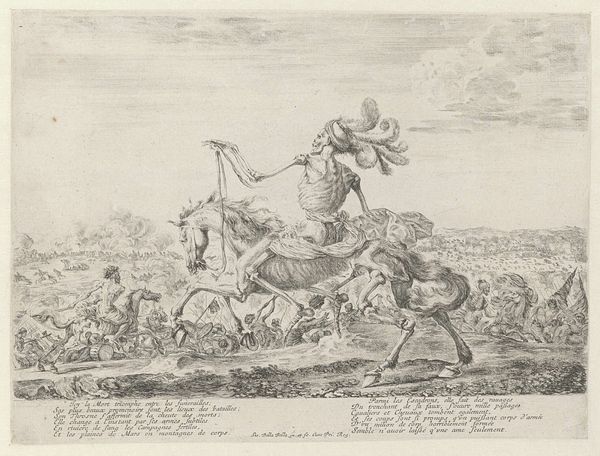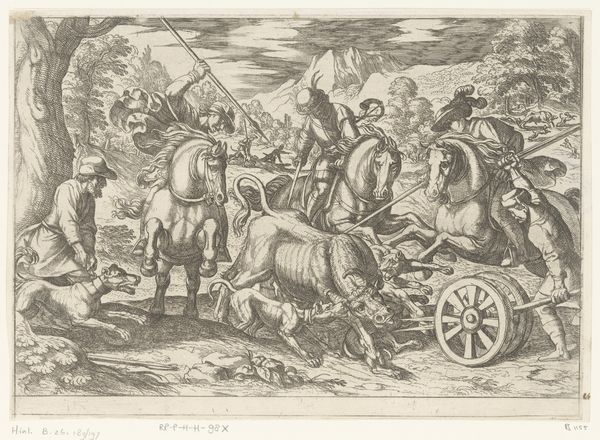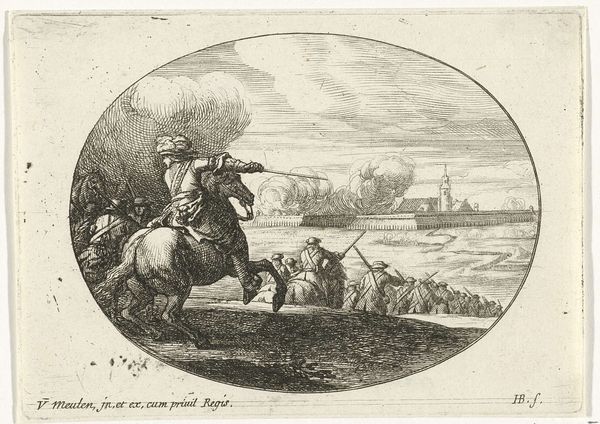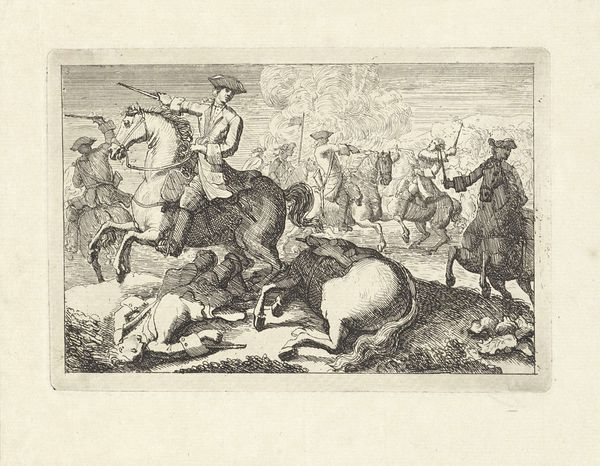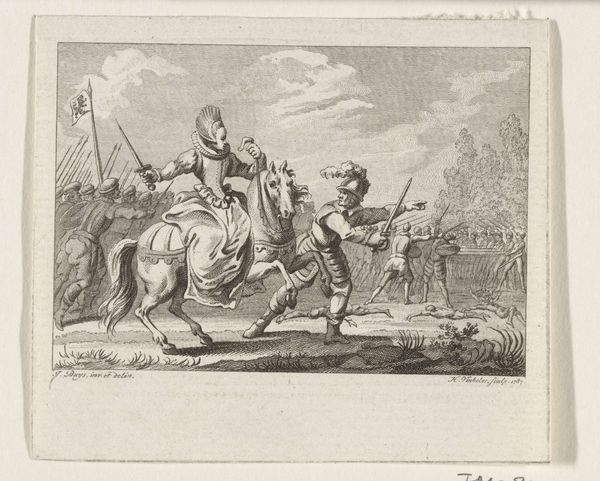
print, etching
#
baroque
# print
#
etching
#
war
#
landscape
#
figuration
#
history-painting
Dimensions: height 156 mm, width 198 mm
Copyright: Rijks Museum: Open Domain
Curator: This is "Militair te paard neergeschoten," an etching likely created between 1673 and 1709, attributed to Jan van Huchtenburg. My first impression? It’s surprisingly tender. Even amidst the chaos of battle. Editor: Tender? I see an endorsement of violence and state power! The drama and frenzy overshadow any perceived tenderness, I feel. Curator: But look at the central figure – the falling soldier. His expression isn't one of agony but, dare I say, resignation? And the way his body seems to be cradled, almost, by the rearing horse. There's a weird, melancholy beauty there, as if time has paused within violence. Or maybe I just love horses... Editor: You might be onto something with that sense of suspension... The Baroque period certainly had a penchant for immortalising moments of intense emotion, theatricality and high drama; often to reinforce notions of nationhood and military might, of course. However, let’s think critically about whose perspectives get represented and amplified by such works. War becomes glorified, but are the realities of conflict honestly reflected? I do wonder… Curator: True. It makes me think of theater and war; both stage artifice. Look at the expressions of the soldiers – not genuine rage, but theatrically presented rage. Did Van Huchtenburg experience any sort of existential discomfort over immortalizing carnage in such a manner, given that he never was on the battlefield himself? We, as viewers are also complicit in celebrating conflict by partaking of art like this, no? It seems wrong on multiple levels, like, this makes me kind of queasy. Editor: Yes. Let's consider the work’s function. It serves as historical record of military clashes and also a clear display of dominance and power dynamics; yet those portrayed on horseback are clearly not women, not indigenous, not Black. These omissions must inform our reading and push us to be critical as we absorb art from that time. This print is both a fascinating document and a potent reminder of the selectivity of historical narratives. Curator: And here we are, centuries later, wrestling with its implications... Art, especially historical art, just presents one with conundrums on top of riddles on top of ethical question marks… I suppose this is what makes these artefacts interesting, beyond any formal or technical accomplishment. Editor: Indeed. These old pieces serve as a window onto the past, but also mirrors reflecting our present anxieties and critical frameworks.
Comments
No comments
Be the first to comment and join the conversation on the ultimate creative platform.
